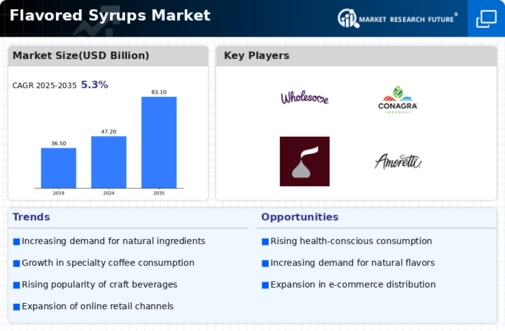Market Share
Flavored Syrups Market Share Analysis
Over the past five years, there have been significant changes in the global vanilla export landscape. The surge in demand for vanilla, coupled with its widespread use in various industries, has led to a substantial increase in export capacity among major producing nations.
The five primary importers of vanilla on a global scale are the United States, France, the Philippines, Germany, and the United Kingdom. This heightened demand is particularly evident in these developed countries, driven by their substantial consumption of flavored bakery and confectionery products. The flourishing popularity of vanilla-infused items in these regions has become a key factor contributing to the notable upswing in vanilla import volumes.
Despite the overall positive trend, certain challenges have emerged, notably in the United States and France. The adoption of synthetic vanilla, as opposed to natural vanilla, has become more widespread in some countries, leading to a decline in import volumes. In both the United States and France, the import volume of vanilla experienced a reduction, with a 5% decrease in the U.S. and a 3% decline in France.
The escalating utilization of synthetic vanilla can be attributed to several factors. One of the primary reasons is likely the lower cost associated with producing synthetic vanilla compared to its natural counterpart. As a result, industries and manufacturers may find synthetic vanilla more economically viable, leading to a shift away from natural vanilla.
Additionally, advancements in technology and the ability to replicate the distinct flavor profile of vanilla synthetically have contributed to the increased adoption of synthetic alternatives. This has further impacted the market dynamics, causing fluctuations in the import patterns of natural vanilla in certain regions.
The implications of these changes are significant for both producers and consumers in the vanilla industry. Producers in countries heavily reliant on natural vanilla may face challenges as the demand for synthetic alternatives grows. On the other hand, consumers may experience variations in the quality and authenticity of vanilla-flavored products as the market witnesses a transition between natural and synthetic sources.
To adapt to these changes, stakeholders in the vanilla industry may need to explore strategies that align with evolving consumer preferences and market dynamics. This could involve promoting the unique qualities of natural vanilla, exploring sustainable cultivation practices, or innovating in product development to cater to changing tastes.
The global vanilla export landscape has undergone notable transformations in the last five years, driven by rising demand and diverse applications. While developed countries remain major importers due to their high consumption of vanilla-infused products, the increasing use of synthetic alternatives has introduced challenges, resulting in a decline in import volumes in certain regions. Navigating these changes requires a nuanced understanding of consumer preferences and a strategic approach to meet the evolving demands of the vanilla market.








Leave a Comment